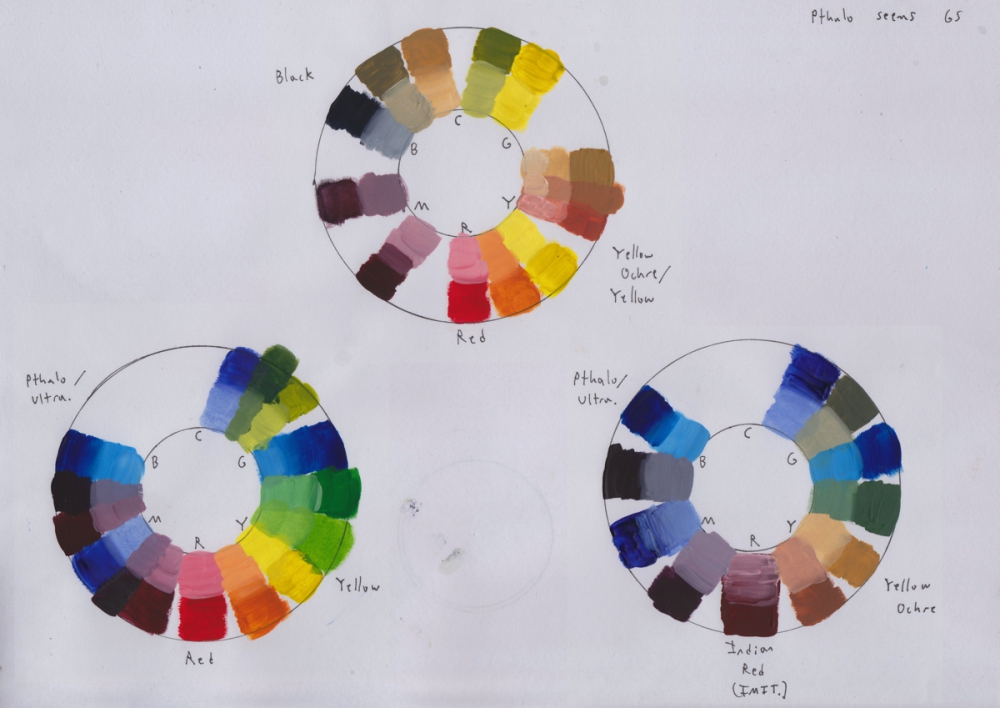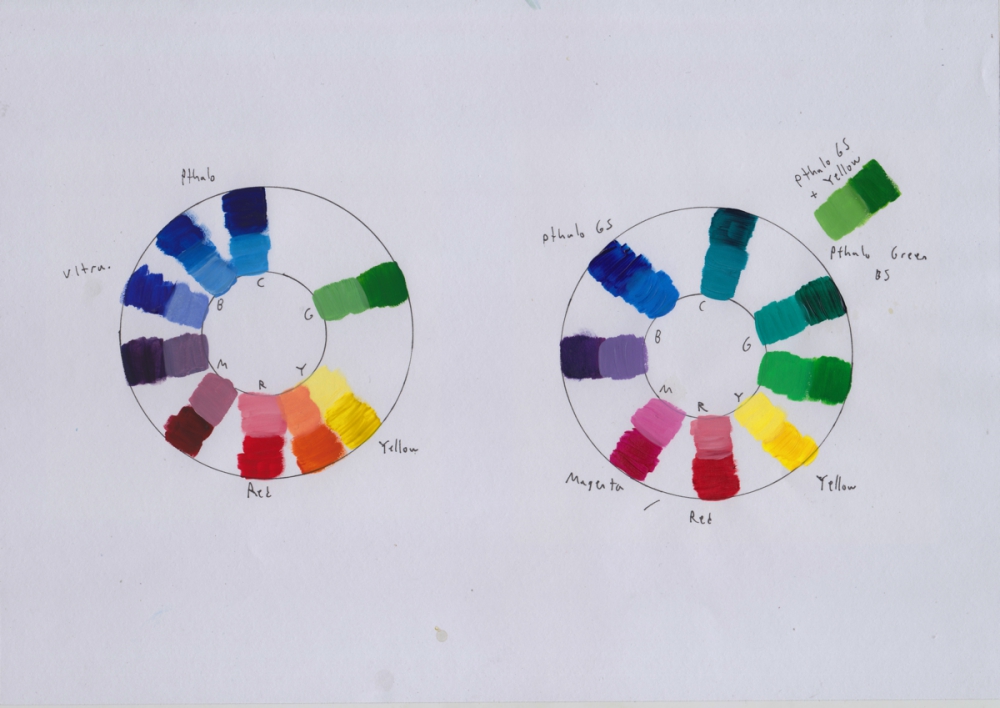
3 Color Palettes
From Left to Right:
[Red, Yellow, Pthalo Blue (Green Shade)/Ultramarine]
[Red, Yellow/Yellow Ochre]
[Indian Red (IMIT), Yellow Ochre, Pthalo Blue GS/Ultramarine]
Experimenting with Limited Palettes

4 Color Palettes From Left to Right: [Red, Yellow, Pthalo Blue GS, Ultramarine] [Quinacridone Magenta, Hansa Yellow Medium, Pthalo Blue GS, Pthalo Green (Blue Shade)]
Their are way more limited palettes then what I covered. These are just the ones I wanted to try. Technically their are as many combinations of three colors as you could think of although only a couple dozen are very useful and common. You could even use a two color palette to great effect. James Gourney has some great examples of two palette paintings, this one I think is one of the most striking. The Zorn palette is technically two color, but I see it more as a three color palette because the black serves as a substitute blue.
I also want to mention if you didn’t see the annotation I made, that it’s often much cheaper to buy a set if you can.
There’s also a lot of small sets to choose from, but for example with Golden, the small ones are around $0.16 per ml, while the big sets are only $0.11 per ml. Prices calculated from Amazon/Dick Blick.
There’s also different series/pigment prices to consider but the video was long enough. I’ll make a note to do a video on deciphering paint tubes.